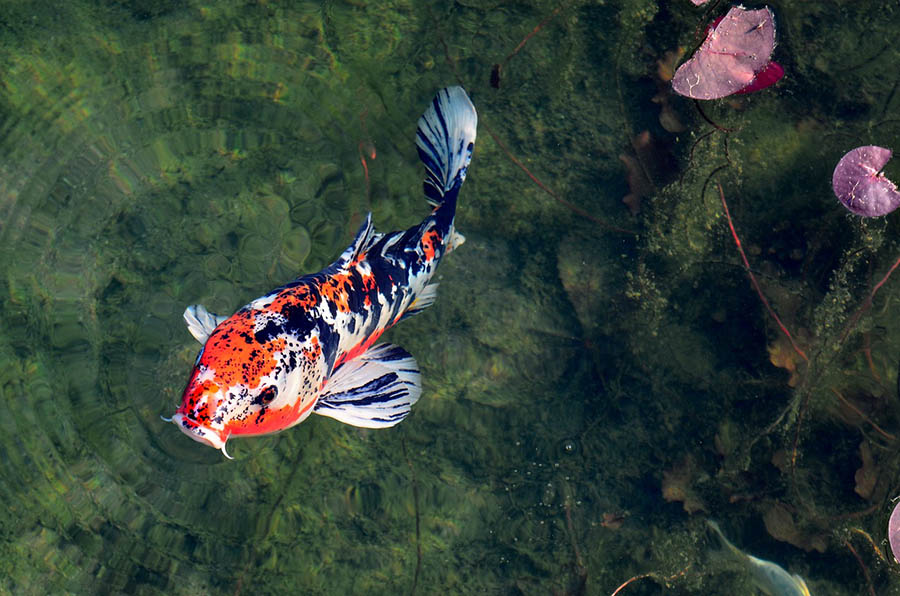Finding algae eaters for your outdoor pond can be a challenge, especially if you live in an area that experiences winter temperatures. Choosing algae eaters that will efficiently consume algae without worsening the water quality by living in the pond can be a challenge, too. There are some great algae-eating options for outdoor ponds, though, and here are some of the best!

The 14 Algae Eaters for Outdoor Ponds
1. Koi
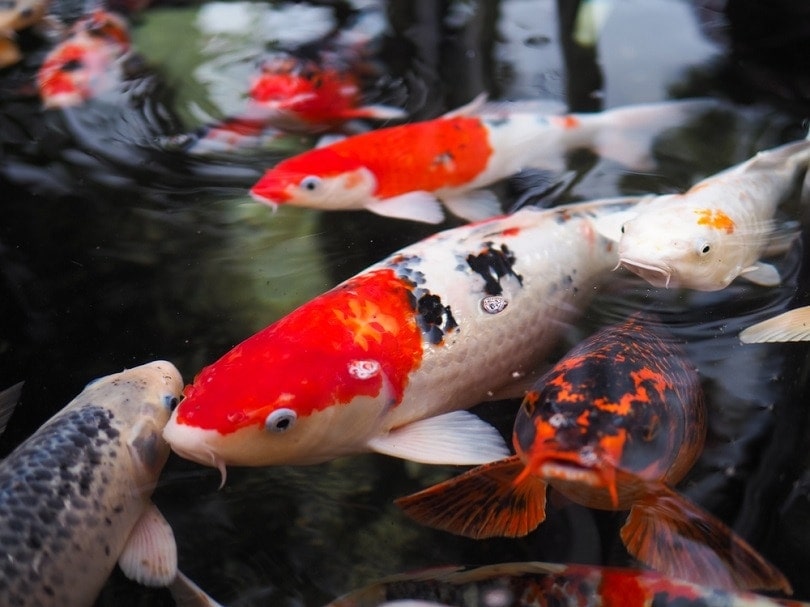
The most popular pond fish across the world, Koi are large fish that resemble goldfish. They are opportunistic omnivores that love to scavenge and will eat plant matter, including algae. Koi can exceed 2–3 feet in length and can live for decades if well cared for.
2. Goldfish
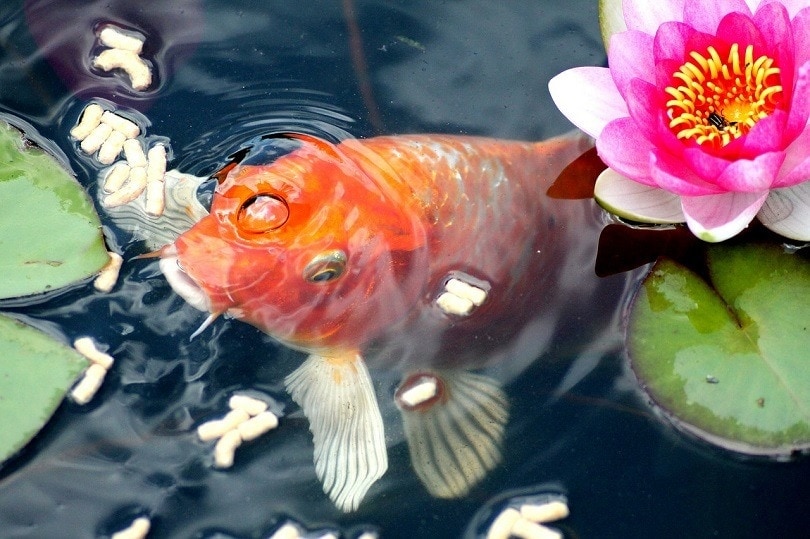
This smaller Koi cousin is easy to find and inexpensive to acquire. Goldfish are also opportunistic omnivores that will happily snack on algae and other plant matter in the pond throughout the day. They can reach 10–12 inches in length and can live for more than 20 years.
3. Grass Carp
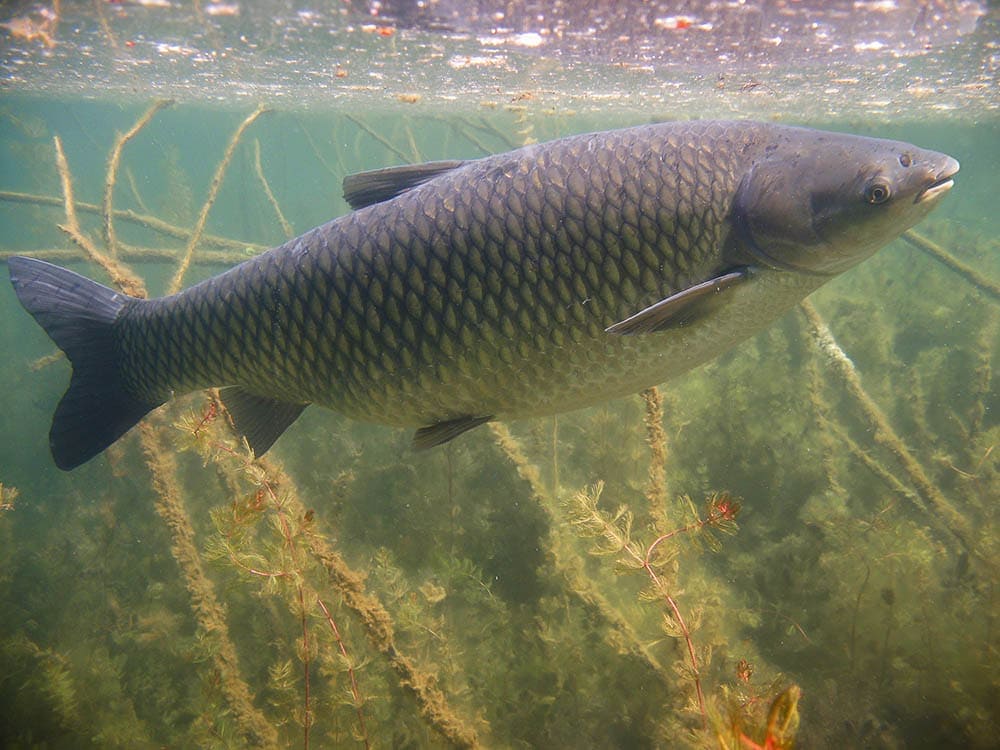
This unusual fish is closely related to Koi and Goldfish. They are native to Eastern Asia and are great for consuming plants, including algae, within a pond. These fish can grow to almost 5 feet in length, though, so they aren’t a good pick for a small pond!
4. Dojo Loach
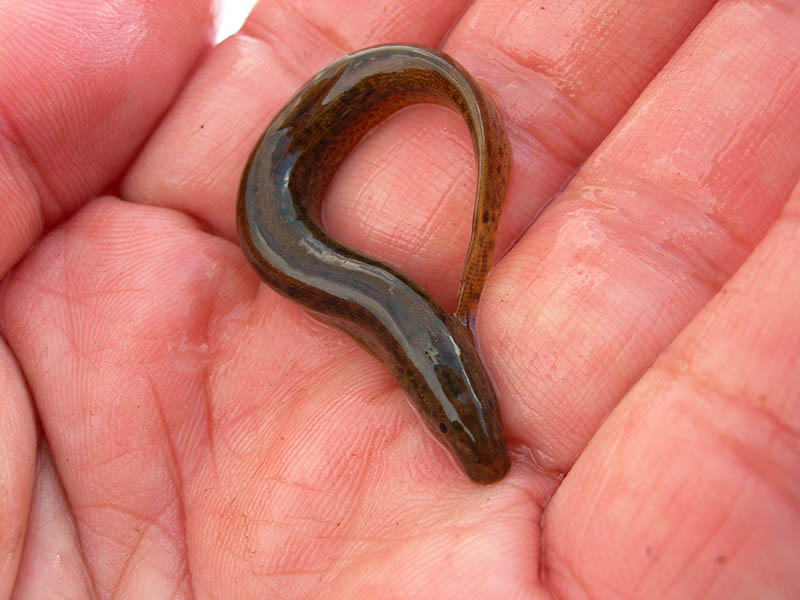
These eel-like fish are like having water puppies in your pond due to their playful, social nature. They will approach people and will even eat from your hand. Dojo Loaches love to eat anything they can get their mouths on, and they will work hard to clear up the algae in your pond.
Related Read: 10 Best Tank Mates for Dojo Loaches
5. Otocinclus
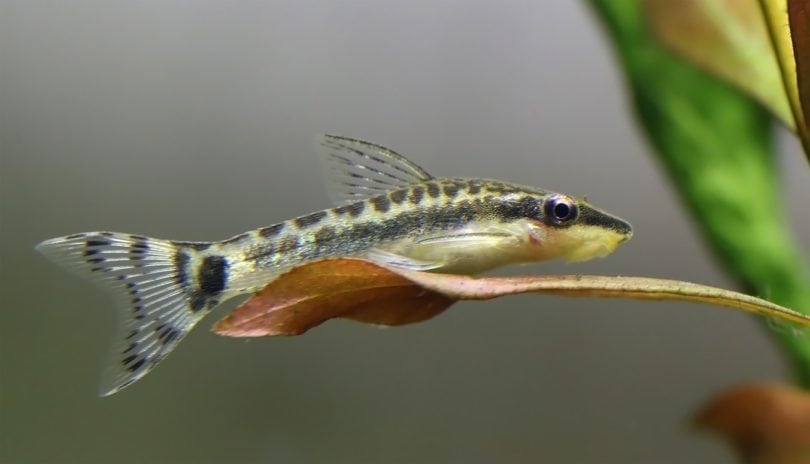
These tiny catfish should be kept in groups of 5–6 fish or more. They may be petite, only growing to around 2 inches at the most, but they are voracious algae eaters. A group of Otocinclus catfish will happily seek out the algae in all corners of your pond.
6. Nerite Snail
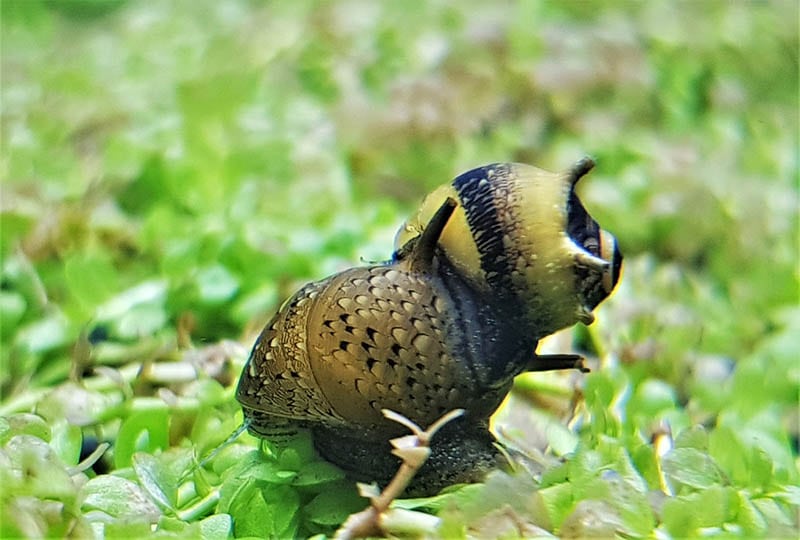
Nerite snails are highly prized in aquariums for their algae eating chops. They are effective at clearing algae, and they can typically thrive in the pond environment. These snails will bedazzle your pond with their eggs, but they will only hatch in brackish water, so they will not take over your pond.
7. Plecostomus

There are dozens of species of Plecostomus fish you could introduce into your pond, but all of them are tropical fish, so be prepared to provide a heated environment if your pond gets cold over the winter. Plecos range in size from a few inches to greater than 12 inches depending on the species. These fish have been known to develop aggression toward other fish with age.
8. Bullfrog Tadpole

Bullfrogs are a great option for insect control around your pond, but they won’t eat algae. Their babies will, though! Bullfrog tadpoles are happy to eat algae and are an effective way to control mosquitoes as well. Be careful to not introduce Bullfrogs into your pond if they are not native to the area, though, as they can quickly outcompete native species for food.
9. Mosquitofish
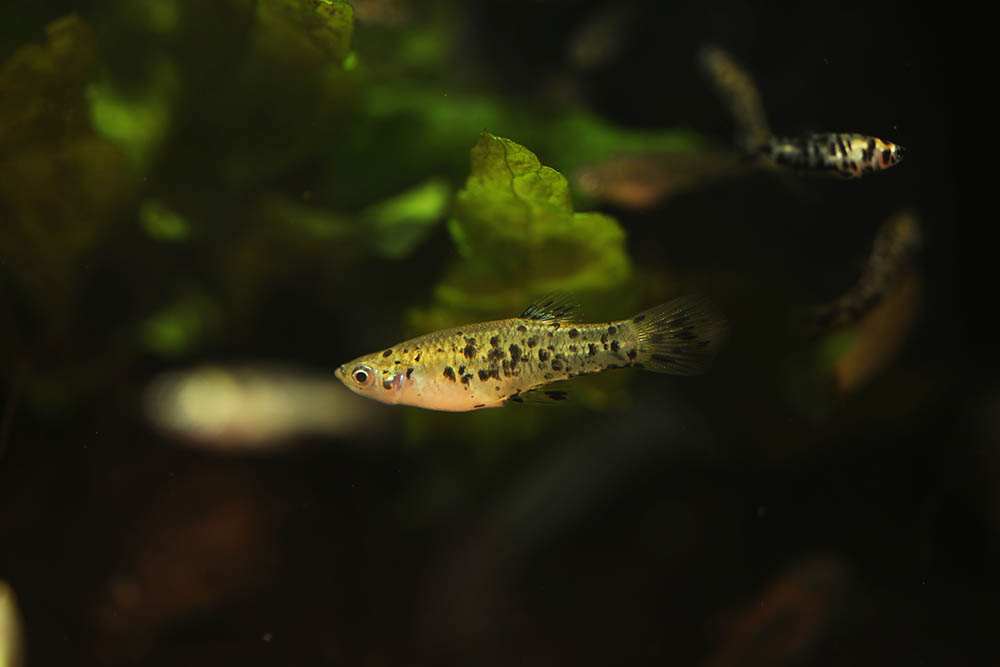
These small fish are primarily carnivorous, so they may not be your top pick for algae control. They will snack on algae, though, especially if other food isn’t overly abundant. They mainly eat invertebrates, like insect larvae. Their name comes from their affinity for consuming mosquito larvae.
10. Molly Fish
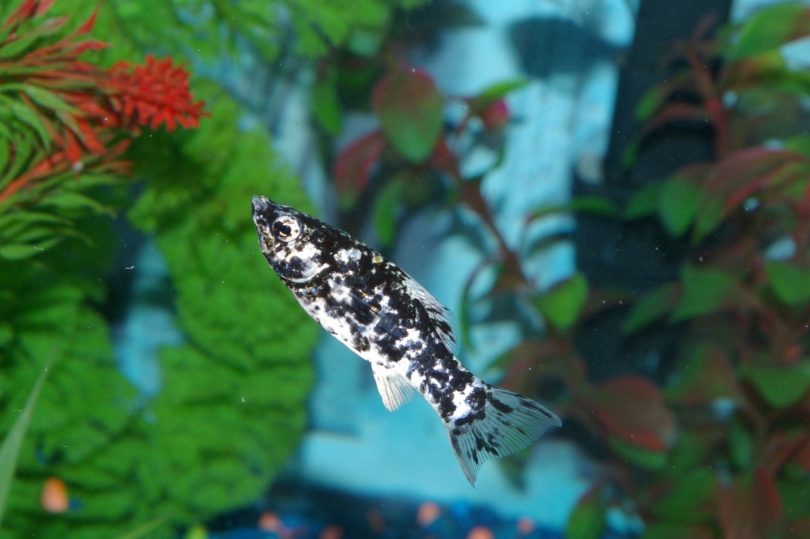
Mollies are live-bearing fish that are popular in home aquariums. However, they are often overlooked for their algae eating prowess. Mollies will reproduce readily in a healthy environment, so you’ll always have a population of them if you care for them, and they will help keep your pond clear of algae.
11. Japanese Trapdoor Snail
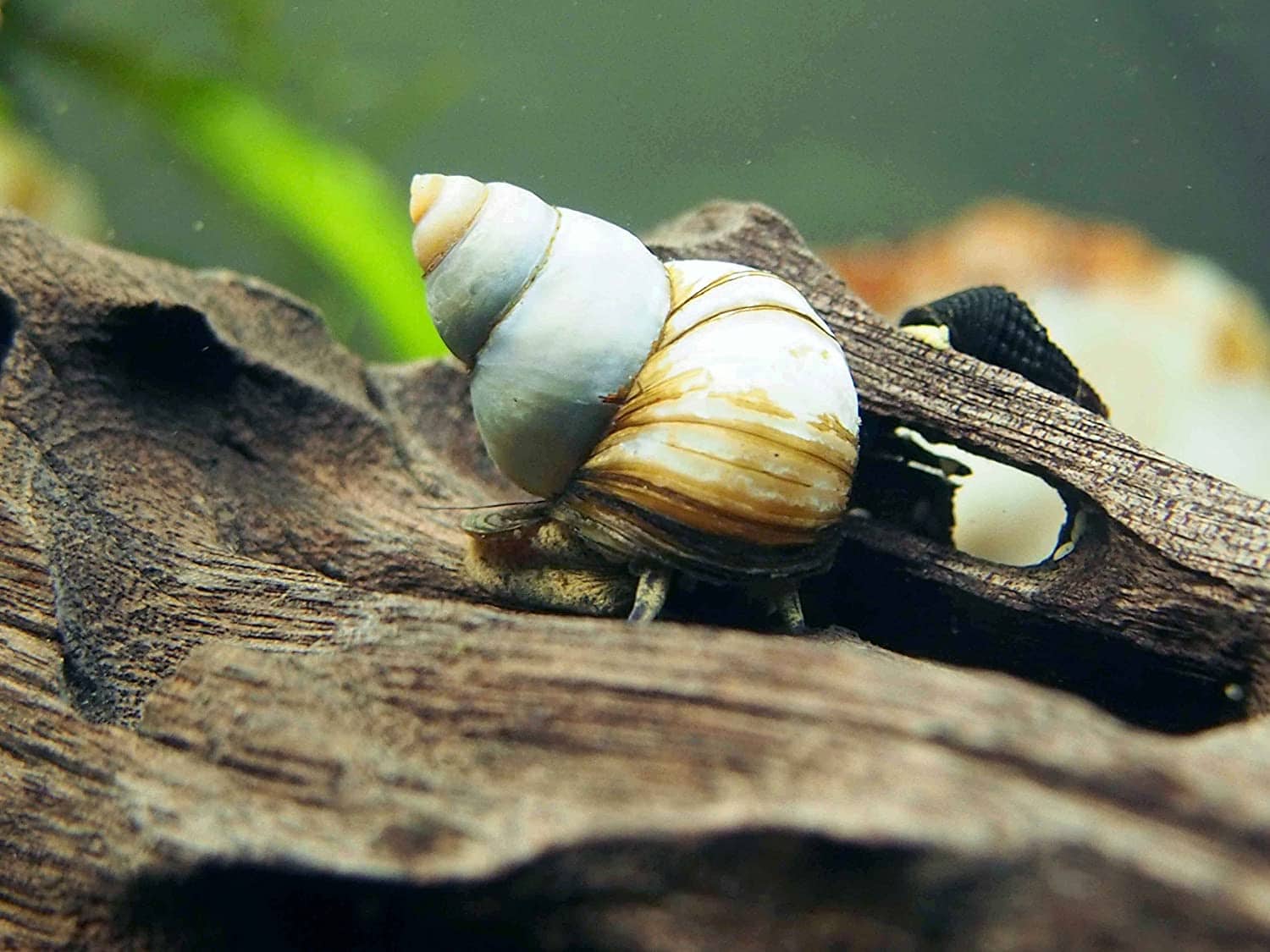
The Japanese Trapdoor Snail is a large snail variety that is capable of reproducing asexually, so even if you purchase one snail, you likely won’t ever run out. They are peaceful and, like Nerite snails, are highly prized for their algae eating skills. Just make sure they don’t escape into the natural environment since they can become invasive.
12. Siamese Algae Eater
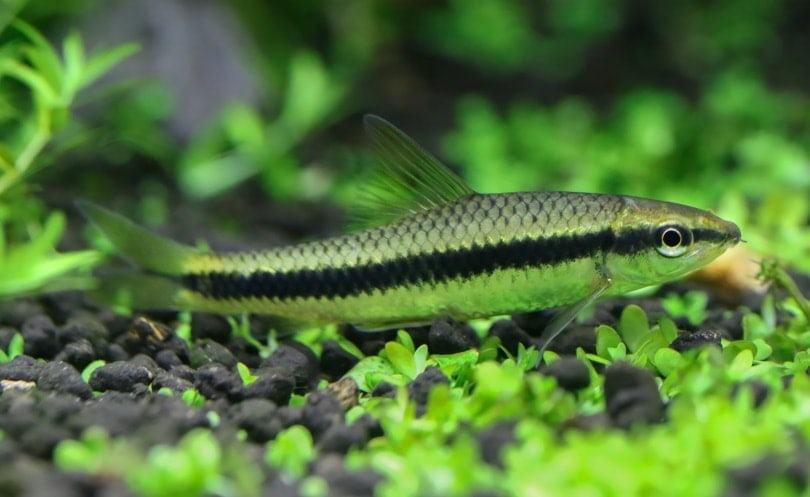
These fish like to stay in groups when they are young, but as they age, they will develop their own territories, so you don’t have to plan to keep a large number of them. They are primarily bottom-dwellers and do a great job of clearing algae growth. Make sure you are purchasing Siamese Algae Eaters as they are often confused with a similar looking fish, the Flying Fox, which does consume algae but not as efficiently.
13. Channel Catfish
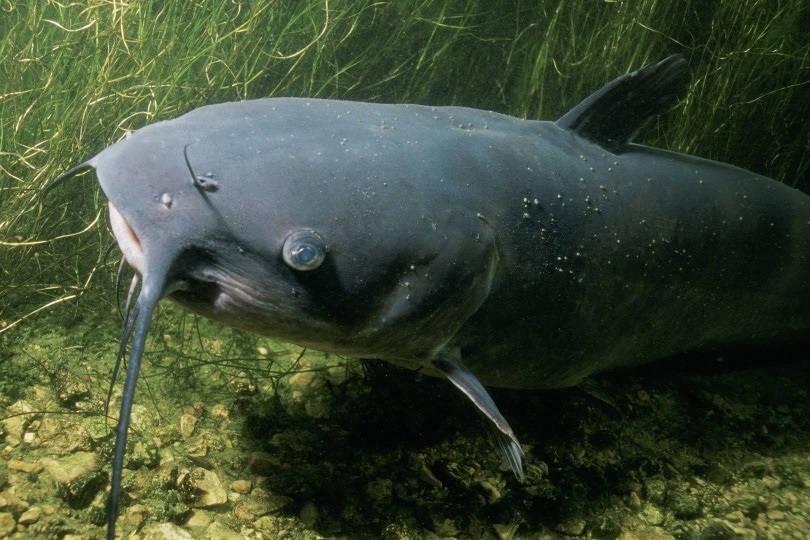
This United States native is a great option for algae control in large ponds. These fish can reach over 4 feet in length and weigh around 50 pounds, so they are not appropriate for small ponds. These fish are a great option if you’re interested in adding a sport fish to your pond.
14. Apple Snail
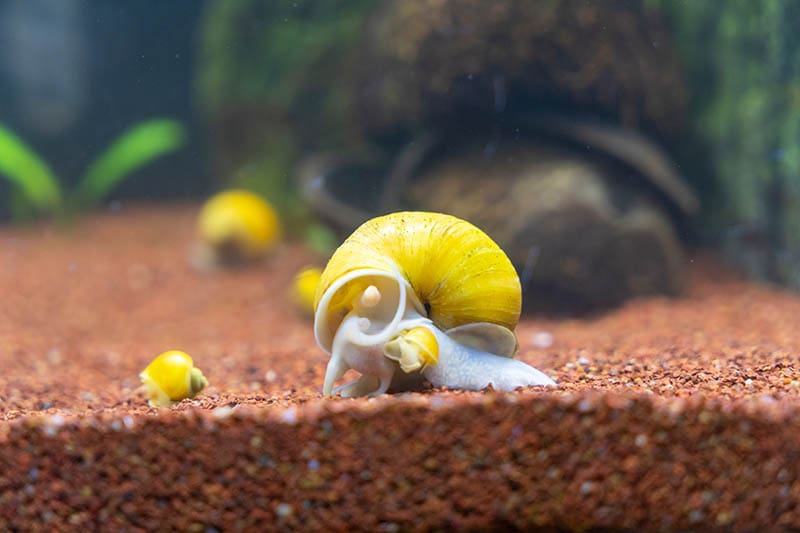
Apple snails are not native to the United States and are illegal to own in some areas due to their invasive nature. The most common type of Apple snail kept as a pet in the US is Mystery snails. Apple snails are efficient at consuming algae, and Mystery snails will typically eat algae and dead plant matter. Channeled Apple snails are known to consume living and dead plant matter, though, and may eat healthy plants if introduced to your pond.

In Conclusion
When it comes to algae eaters, you do have some great options, whether you’re looking for something tropical or cool water. Keep in mind that any species you introduce to your pond that isn’t native to the area can pose a risk to the local ecosystem. It’s important to ensure your pond pets have no means of escaping into native waterways or drains. The algae eater’s variety of natural algae control can be beneficial if used responsibly!
Featured Image Credit: jggrz, Pixabay
